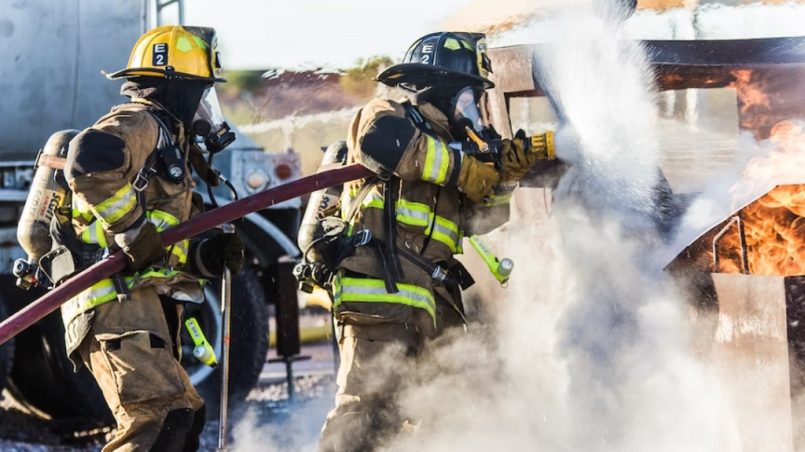In May 2022, 10 Tampa Bay 8 News (wtsp.com) reported that Florida state had filed a lawsuit against many firefighting foam manufacturers. The legal complaint alleges companies that their products have caused environmental pollution and posed significant health risks to those exposed to the toxic foam.
Led by Attorney General Ashley Moody’s office, the lawsuit accuses 14 companies, including DuPont de Nemours Inc, UTC Fire & Security Americas Corporation, Inc, The Chemours Company, and Tyco Fire Products LP, of manufacturing and selling AFFF (Aqueous Film Forming Foam) that got discharged in multiple state locations.
Typically, AFFF is used to extinguish fires in flammable liquids. It is also used for equipment testing and firefighter training. Florida asserts that these companies failed to provide sufficient warnings or instructions regarding the health hazards and risks associated with harmful substances like PFOA/S (Perfluorooctanoic Acid/ Perfluorooctane Sulfonate) contained in AFFF.
The lawsuit clearly states that DuPont/Chemours were aware of the foam’s toxicity. They even monitored the health of workers exposed to PFOA in early 1978. However, this data was not shared with the general public or the United States Environmental Protection Agency. This not only affected the drinking water but also posed a threat to public health.
Multiple locations where the state had incurred costs for testing and resolution of PFOA/s include Volusia County Fire Training Center, Florida State Fire College in Ocala, Hillsborough Community College Fire Academy, and a few others.
The precise amount of compensation sought by Florida was not mentioned. However, the state intends to obtain compensatory damages to cover the costs associated with monitoring, investigating, responding to, and solving the threats to public health.
DuPont is not the only company involved in an AFFF lawsuit. In May 2023, Reuters reported that Kidde-Fenwal Inc, specializing in fire control systems, filed for bankruptcy. The company is alleged to have produced firefighting foam products containing “forever chemicals” that have contaminated water sources near U.S. military bases and airports.
Understanding Firefighting Foam & Its Hazards
Simply put, perfluorooctane sulfonate (PFOS) and perfluorooctanoic acid (PFOA) are synthetic chemicals used to impart heat and water resistance to various products. These chemicals are found in daily items like non-stick cookware, take-out food wrappers, and clothing. Additionally, the military workforce uses these chemicals in fire-fighting foams to extinguish fires involving petroleum-based substances.
During the 1970s, the Department of Defense introduced aqueous film-forming foam (AFFF) containing high levels of PFOS for managing specific types of fires, like flammable liquids and aircraft/jet fuel. PFOS and PFOA don’t break down naturally in the environment like other chemicals and lead to environmental concerns. These chemicals tend to accumulate in groundwater and can contaminate local drinking water sources.
Furthermore, specific PFAS tend to accumulate and stay in the human body over extended periods. This prolonged exposure to a high mix of PFAS/PFOA/PFOS can pose health hazards like thyroid disease, high cholesterol, and liver and immune system changes. It also causes bladder, kidney, and testicular cancers.
Does Firefighting Foam Cause Cancer?
The American Cancer Society mentions that the International Agency for Research on Cancer (IARC) considers PFOA to be carcinogenic for humans.
In March 2020, BuzzFeed.News reported on a new study titled “Application of the Key Characteristics of Carcinogens to Per and Polyfluoroalkyl Substances.” that shared evidence of PFAS chemicals acting as cancer-causing agents. These mechanisms include various ways in which the compounds disrupt human biological activity, such as altering DNA, weakening the immune system, inducing acute inflammation, disrupting normal cell communication, and promoting cell proliferation.
A team of researchers, in collaboration with Indiana University, conducted an investigation to identify carcinogenic traits in approximately 24 PFAS chemicals. They examined evidence from animal, cell, and human studies, specifically focusing on 10 such traits.
Alexis Temkin, a toxicologist said that the findings showed that each of the chemicals exhibited at least one of the crucial characteristics associated with carcinogens.
Firefighting Lawsuit Update: Walking the Legal Path
In February 2021, Drugwatch reported that as of January 2021, there were 950 pending claims in the South Carolina federal court’s multidistrict litigation (MDL-2873) regarding Aqueous Film-Forming Foams Products Liability. This represents an increase from the 820 claims reported in DuPont’s annual report as of December 31, 2020.
As of June 2023, the Plaintiff Leadership Committee and 3M jointly requested a trial delay. The motion, which consisted of one page, highlighted that the parties are actively negotiating and arriving at a solution. The attorneys involved believe that focusing on settlement discussions rather than trial preparations is the most prudent course of action.
The MDL Judge approved the motion, granting a three-week extension for the trial date. This development comes after speculation about a $10 billion settlement offer from 3M to resolve claims made by the municipalities.
Individuals who have been affected by PFAS contamination can file a legal complaint and get compensated for their suffering and loss. It is necessary to work closely with a lawyer, who can provide the correct legal guidance and also ensure the correct verdict at the court. However, when it comes to the AFFF lawsuit settlement amounts, it is case specific.
TorHoerman Law states that the settlement amount can be determined based on the degree to which an individual got exposed to the firefighting foam. It also depends on the cancer diagnosis data and punitive or compensatory damages. The entire treatment cost and medical expenses also help to decide the amount. It is necessary for individuals diagnosed with cancer due to PFAS exposure to keep all medical records and evidence handy, for strengthening their legal case.
Conclusion
The PFAS-free firefighting foams are considered to be a safer option, but still, more research is needed to affirm the same. In March 2020, the Environmental Health News reported that the capabilities of the PFAS-free firefighting foams are not very good. However, the fire departments can test out the products and decide accordingly.
However, firefighters, airport and military workforce, and others who have been exposed to PFAS and have developed cancer and other ailments, should seek medical and legal assistance.Image Source:


